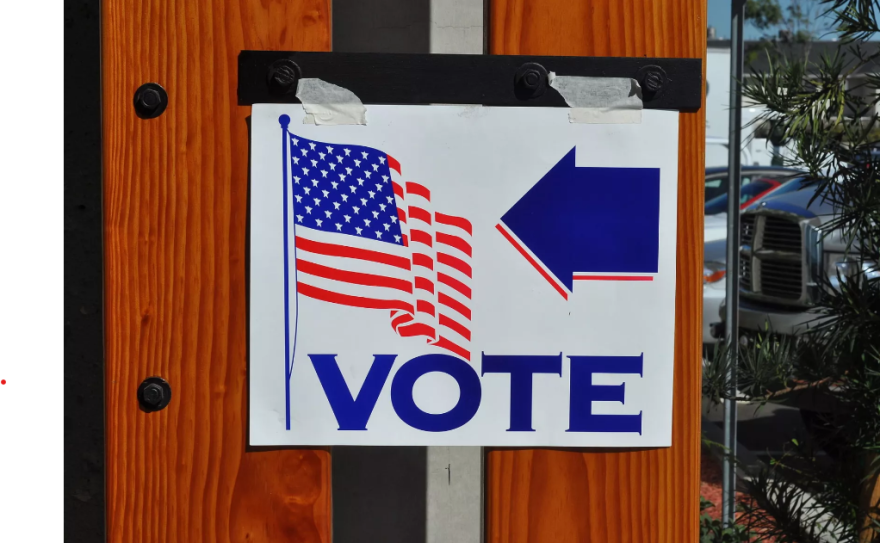MONTGOMERY, Ala. (AP) — Alabama is headed to the first significant revamp of its congressional map in three decades after the U.S. Supreme Court rejected the state's bid to keep using a plan with a single majority-Black district.
The decision on Tuesday sets the stage for a new map with greater representation for Black voters to be put in place for the 2024 elections. The ruling marks a victory for Black voters in the state who had challenged the existing districts as racially discriminatory. Advocates said they hope it will bolster similar redistricting challenges elsewhere around the country.
What happened?
Justices denied Alabama's emergency request to keep Republican-drawn congressional lines in place and stop a three-judge panel from drawing new lines as the state appeals.
The three-judge panel had ruled the state plan — with one majority-Black district out of seven in a state that is 27% Black — likely violated the U.S. Voting Rights Act. The three-judge panel said the new lines must include a second district where Black voters constitute a majority or “quite close to it.”
What happens next?
The three-judge panel will quickly proceed with the redrawing of new districts for use in the 2024 elections. The panel will hold a Tuesday hearing on three possible replacement plans proposed by a court-appointed special master.
The court told plaintiffs and the state to submit any objections to the proposed plans this week. Alabama Attorney General Steve Marshall said the state will continue the legal fight to restore state-drawn lines, but Alabama will face a “court-drawn map for the 2024 election cycle.”
What will the new lines look like?
The three proposals would alter the boundaries of Congressional District 2 in southeast Alabama, now represented by Republican Rep. Barry Moore, so that Black voters comprise between 48.5% to 50.1% of the voting-age population. It's a shift that could put the seat in Democratic hands.
The special master said that candidates supported by Black voters would have won 13 or more of the last 17 elections in the district. By contrast, the district drafted by GOP lawmakers had a Black voting-age population of 39.9%, meaning it would continue to elect mostly white Republicans.
What is the reaction?
The decision was a victory years in the making for Black voters and advocacy groups that had filed lawsuits challenging the Alabama districts. Deuel Ross, a lawyer with the NAACP Legal Defense Fund who argued the case before the Supreme Court, said the high court rejected Alabama's bid to "relitigate issues that have already been decided and openly defy what the court has said is a Voting Rights Act violation."
Plaintiffs had likened the state's resistance to that of segregationist Gov. George Wallace's efforts in 1963 to fight integration orders. “Despite these shameful efforts, the Supreme Court has once again agreed that Black Alabamians deserve a second opportunity district," plaintiffs in the case said.
The decision was a loss for the state that had tried to argue the Supreme Court's June ruling didn't necessarily require the creation of a second majority-Black district. Marshall accused plaintiffs of prioritizing “racial quotas” over traditional redistricting principle, and said the state will “now be encumbered with a racially gerrymandered, court-drawn map for the 2024 election cycle.”
“We are confident that the Voting Rights Act does not require, and the Constitution does not allow, ‘separate but equal’ congressional districts,” Marshall said.
A winding path
The winding legal saga in Alabama began when groups of Black voters challenged Alabama’s congressional map as racially discriminatory. A three-judge panel agreed and ordered new lines drawn, but the Supreme Court in 2022 granted Alabama’s request to put that order on hold ahead of the 2022 elections. However, justices in a 5-4 June ruling upheld the panel’s decision. Lawmakers in July drafted new lines that maintained one majority-Black district. The three-judge panel on Sept. 5 chastised the state for flouting their directive and said they would step in to oversee the drawing of new lines.
Other states
The redraw in Alabama comes as redistricting cases are moving through the legal pipeline in Louisiana, Georgia, Florida and elsewhere, making similar arguments that the states illegally weaken the political influence of Black voters.
Ross, who is involved in the Louisiana litigation, said he hopes the Supreme Court decision sends a message that the “Louisiana case should move forward" similar to how Alabama did.
Kareem Crayton, a redistricting expert at the Brennan Center for Justice, which had filed a brief on behalf of the Alabama plaintiffs, said, “I do think everyone in these other states is paying attention to this case.”


